That huge rear wing.
Arguably, it's the main thing that draws your attention — or shock, or awe, or horror — when you first see the McLaren Senna. It sits incredibly far forward while casting an enormous shadow, looking a little like something from a Hot Wheels car.
The first McLaren Senna has arrived in New Zealand. It sits in the McLaren Auckland showroom, ready for its public open day debut this weekend at the manufacturer's Auckland dealership on Great North Road. And yeah, no, seeing it in the flesh ... it isn't the prettiest car in the world.
But like it or not, that wing weighs just a whisker over five kilograms, and plays a huge role in creating 800kg of downforce (at 250km/h). And that's just the start of the Senna's 'numbers war' madness.
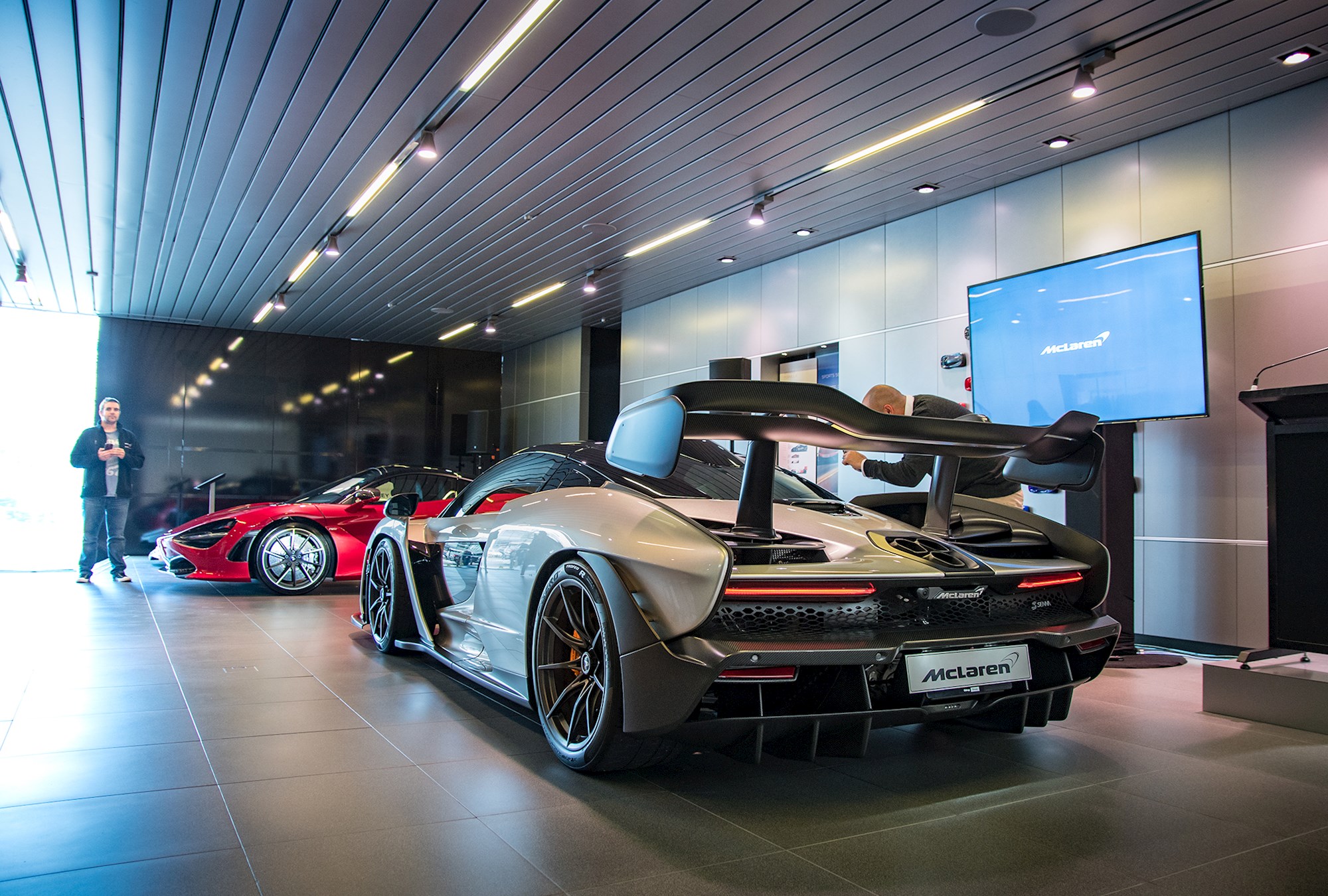
A select group including media were invited this morning to McLaren Auckland, to touch sniff and listen to the new McLaren Senna. Out of the 500 Sennas McLaren are producing, six are coming to New Zealand, all of which have already been sold — including this one.
Unless you live under a rock, you'll be well aware of this car and what it aims to do. It's the latest chapter in McLaren's 'Ultimate Series' line-up; replacing the P1 as the company flagship. Somewhere in the depths of its complicated panel-work is the M840TR 4.0-litre twin-turbo V8 that produces 588kW and 800Nm. That's 59kW more than the 720S, and 86kW less than the hybrid P1.
The 100km/h sprint comes in less than 2.8-seconds — 200km/h is said to be indicated at 6.8 seconds, 300km/h in 17.5 seconds, and the top speed is 340km/h. That makes it quicker than the P1 in every measure despite having less power on its plate, with exception to the 0–300km/h test where it's slower thanks to all of that air-slicing aerodynamics.
It's figures like these that make headlines, and help thrust the Senna smack bang into the next-gen hypercar battle, where it will face off against the Mercedes-AMG Project One and the Aston Martin Valkyrie. Hell, you could possibly even throw the Tesla Roadster into that mix, too.
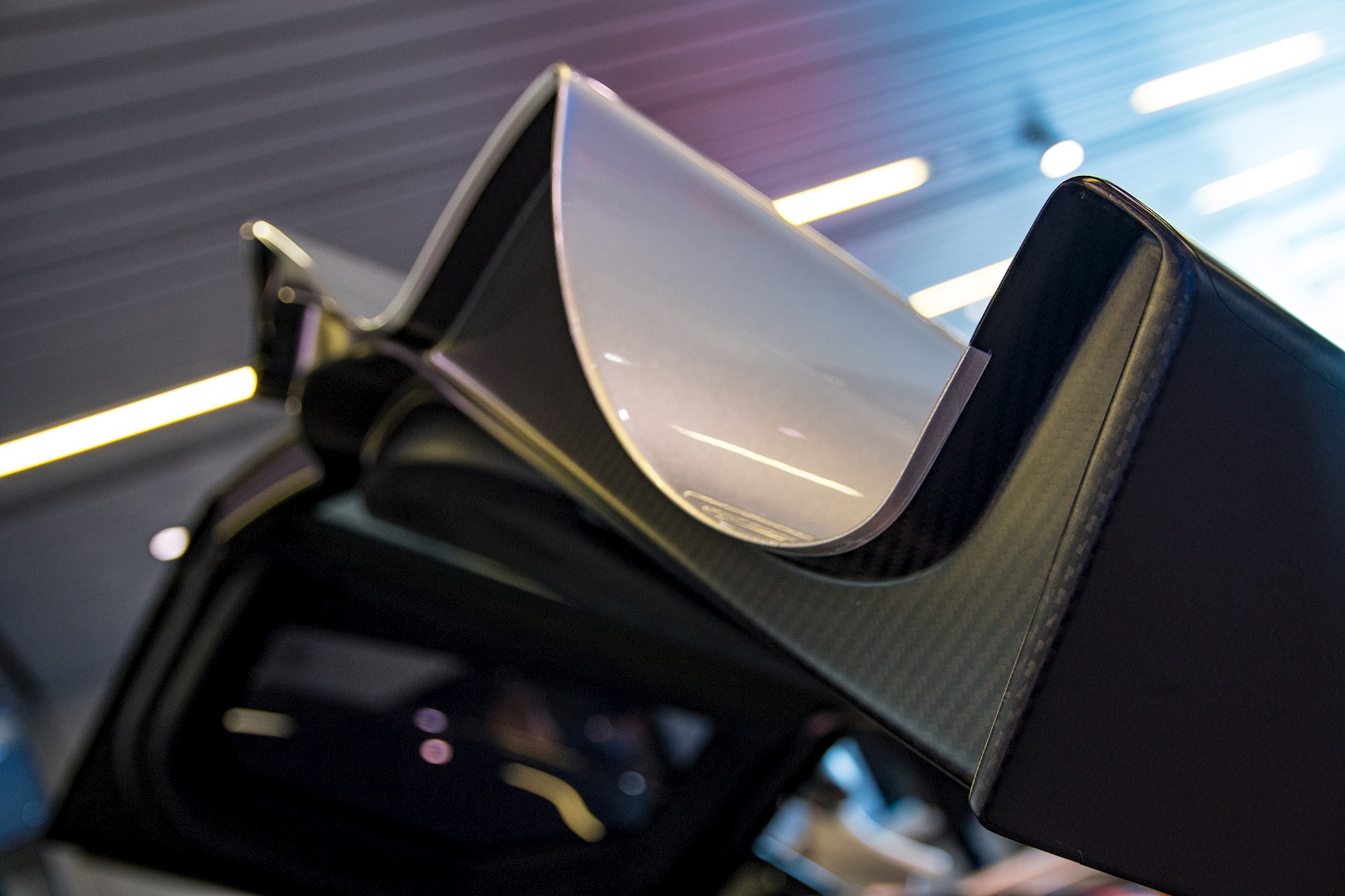
But, seeing it in person — standing still and not at 300km/h — it's all the little things that are the most impressive.
The front fenders, for example. They're quite a large unit, especially given that the Senna's nose is so long and pointed. But they only weigh 660 grams a pop. For reference, the same part on the 720S weighs 2.2kg.
The carbon fibre used to construct them is just a millimetre thick, yet somehow it comes out the other side with a shiny factory finish. Gawkers and double takers on the street would never know.
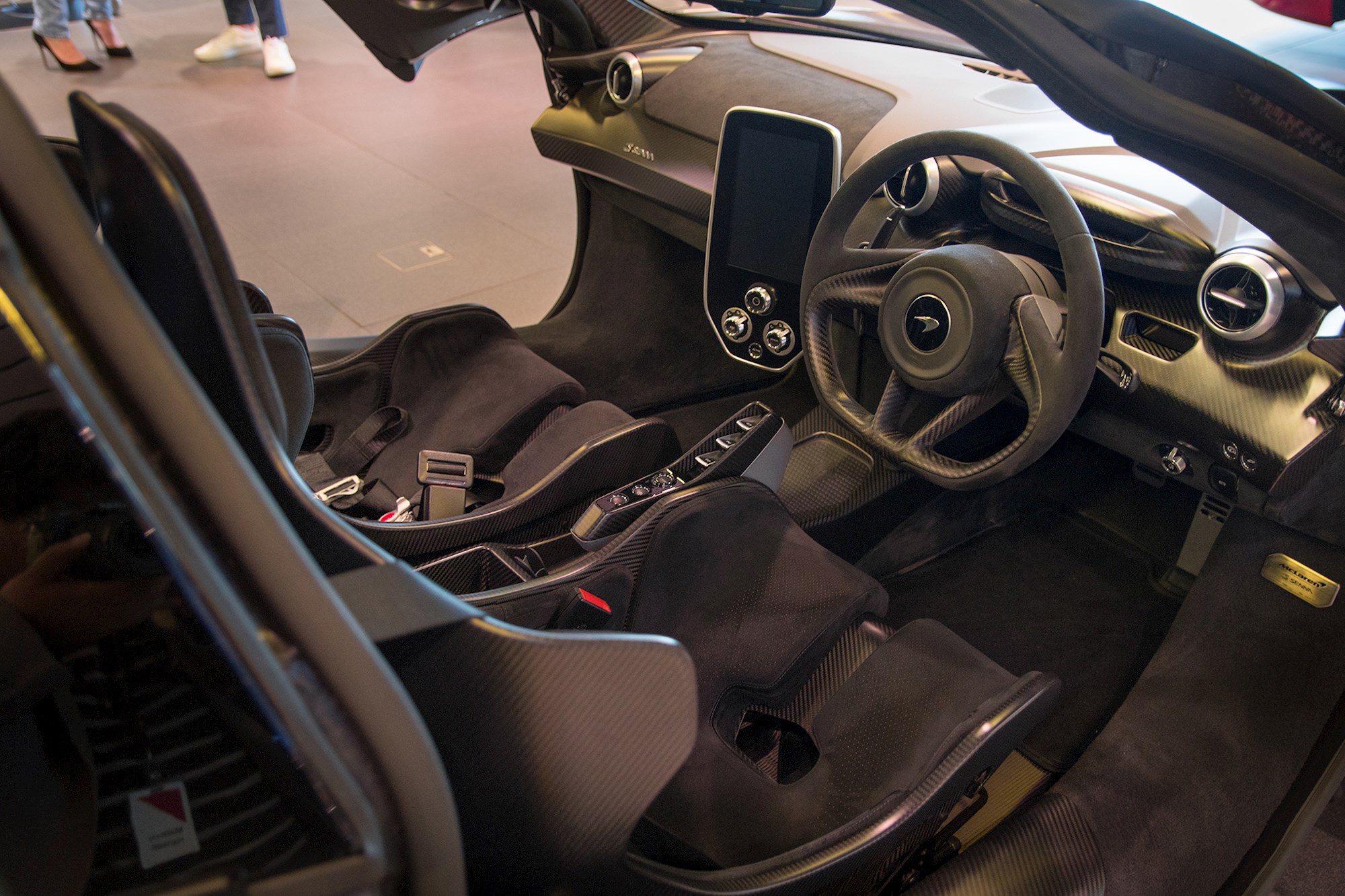
The seats are similarly impressive. They're a pair of relatively minimalist carbon-fibre buckets, lined with a bit of padding and not much else. But somehow they manage to be quite comfortable to sit in, and they weigh just 3.2kg.
All up, the Senna weighs 1198kg when bone dry. It's the lightest car in its class, and about 200kg lighter than the P1 that came before it.
The rest of the cabin will be immediately familiar to anyone who knows McLaren's current line-up. Layout is functional, the main set of dials behind the driver articulates like that on the 720S, and the fandangled swinging doors allow for relatively easy ingress and egress.

Weirdness is limited to the Start button's placement on the ceiling, and the drive-mode console being bolted to the side of the driver's seat, and the steering wheel that's totally devoid of buttons. No lane-departure prompts or volume nobs to be found there — thank God.
While we stood there, the executive decision was made to fire up the Senna and give it a good rev. Turbocharged V8s tend to sound pretty interesting at the best of times, and on rev the Senna is no different — almost singing out like a V10 more than an eight. You can check out our start-up and rev clip on Facebook by clicking here.
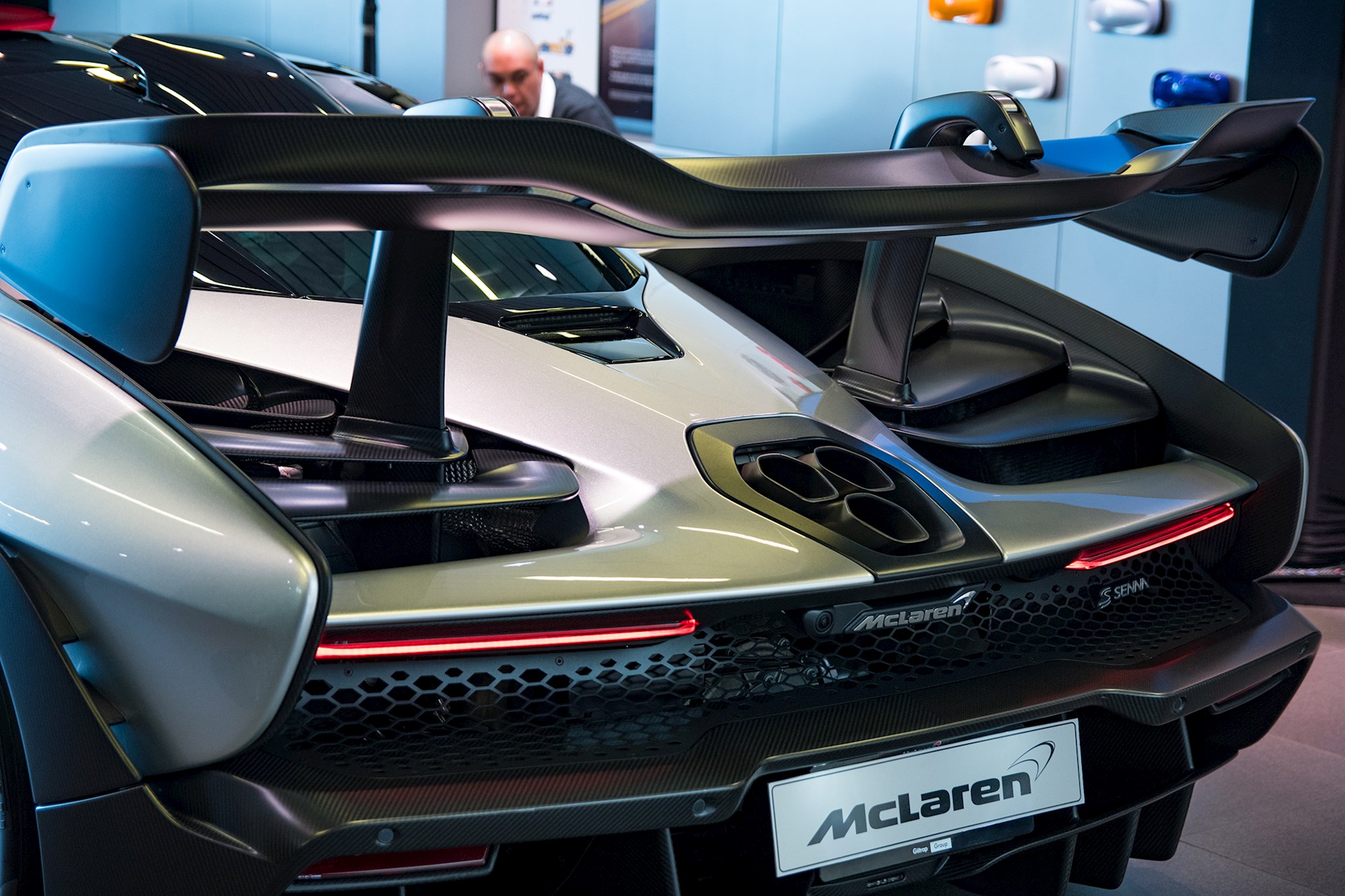
Naturally, you would assume that the Senna is a pretty vicious thing to drive, a lot like its P1 and F1 family tree. But, that's not really the case.
Modern McLarens in general are known for their ease of use on typical roads. We've noted it in our tests of the 570S and 720S — both of which feel incredibly straightforward and comfortable to drive.
And while chatting to McLaren Auckland's Luke Neuberger, he affirmed that the Senna is more like its line-up counterparts — usable and easy to get used to — than its more brutal P1 forefather.
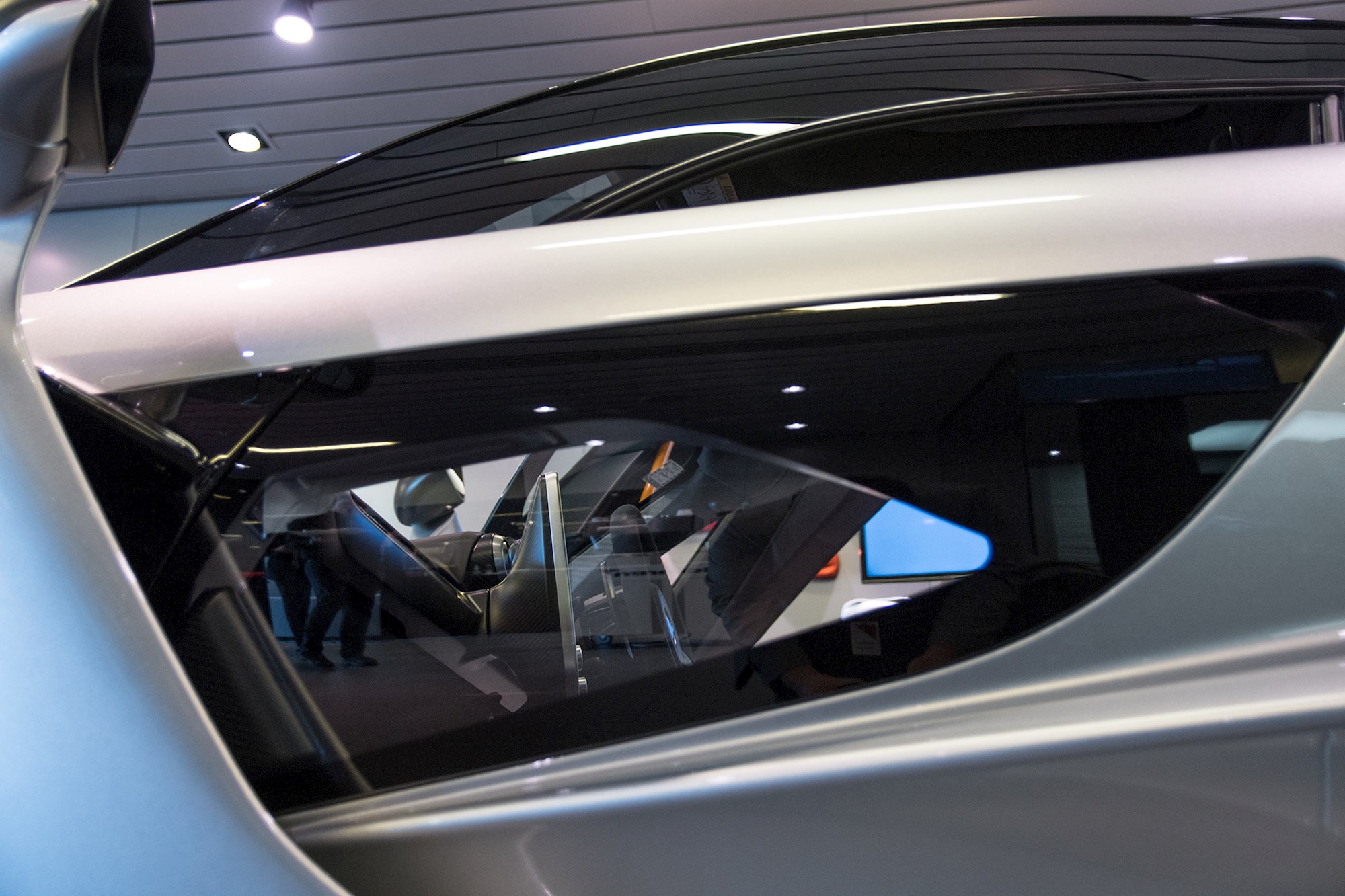
Senna pricing starts at around $1,500,000, although McLaren has said that most buyers have opted to visit the options list. This particular Senna comes with various optional extras and MSO goodies. It's painted in 'Super Nova Silver' paint — a colour that McLaren killed off years ago, only for at least one particular Senna owner to request it come back for their car.
Body-coloured MSO end plates on the wing, McLaren Orange brake callipers, and the glass-panels in the doors (yes, they're optional) are also unique extras.
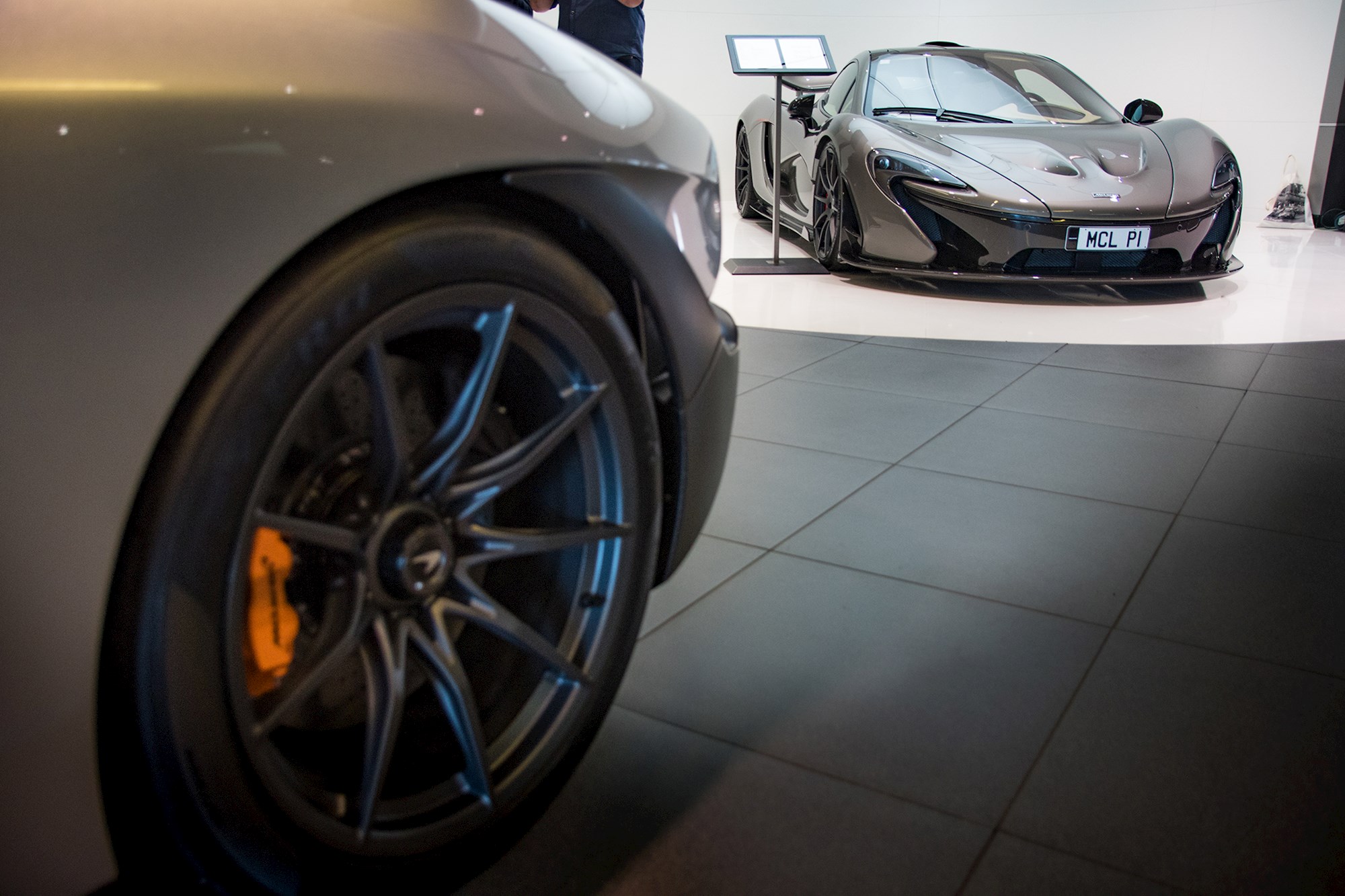
As mentioned earlier, the rest of the Senna's appearance has come under huge scrutiny. I suppose that's just what people like to do, particularly with cars that come with a huge wave of hype.
It doesn't necessarily help that the car the Senna replaces has always been considered to be one of the smoothest, most attractive cars in the segment.
In some ways, the Senna's case is very similar to that of the current Honda Civic Type R.
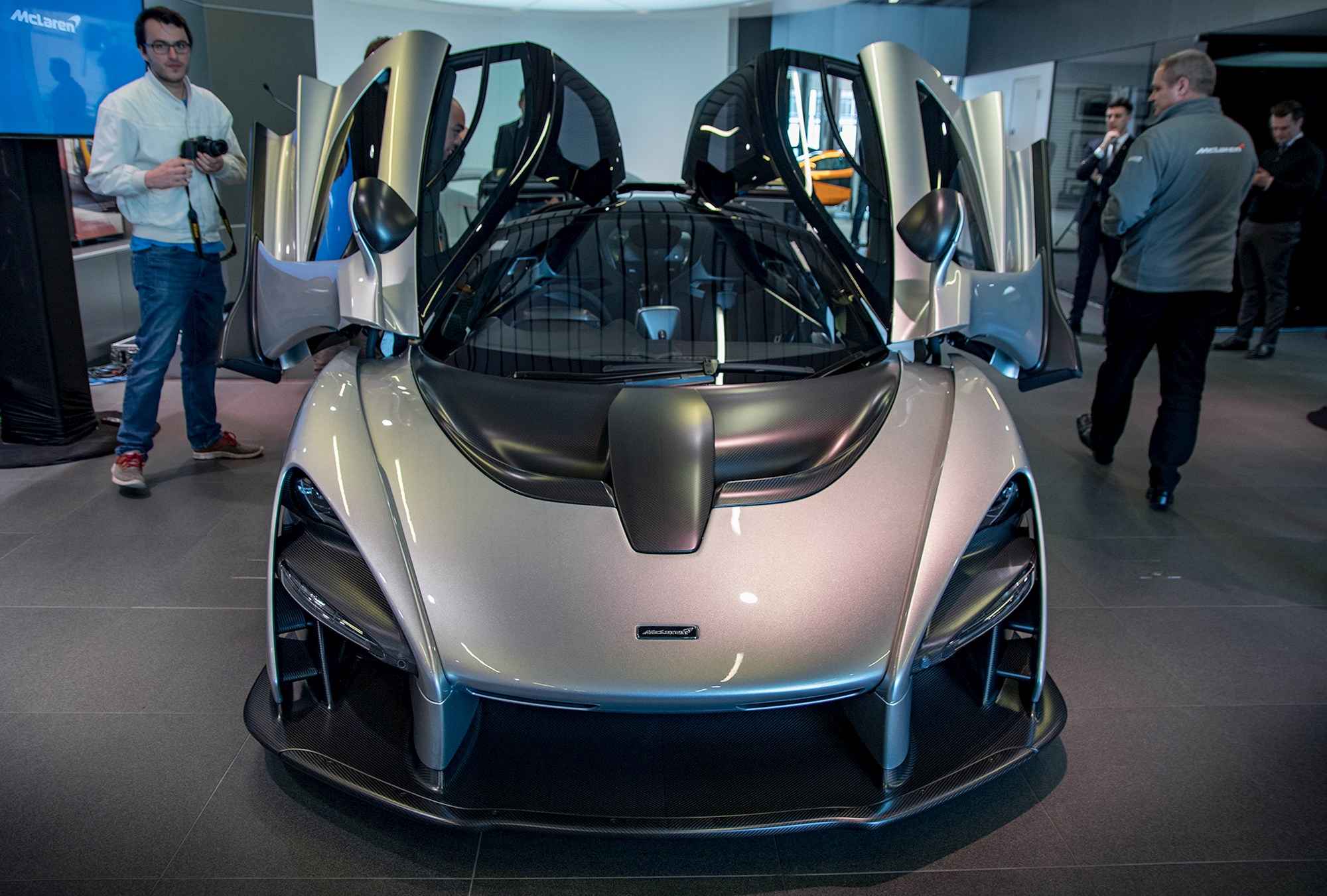
Comparing a McLaren to a Honda will probably come off as blasphemy to some, but there are similarities. Both aim to be the quickest in their segment around a race track, both place huge emphasis on aerodynamics and grip, and both as a direct result have their naysayers.
So no, the looks remain a 'Marmite' proposition. But that's really just part of the Senna's angle. It's an intricate, zero-compromises car made for lap times and little else.
Yeah ... I think Ayrton would've been quite fond of it.
























